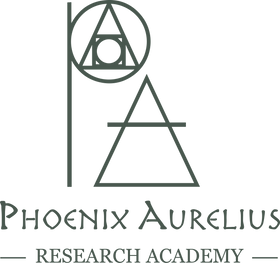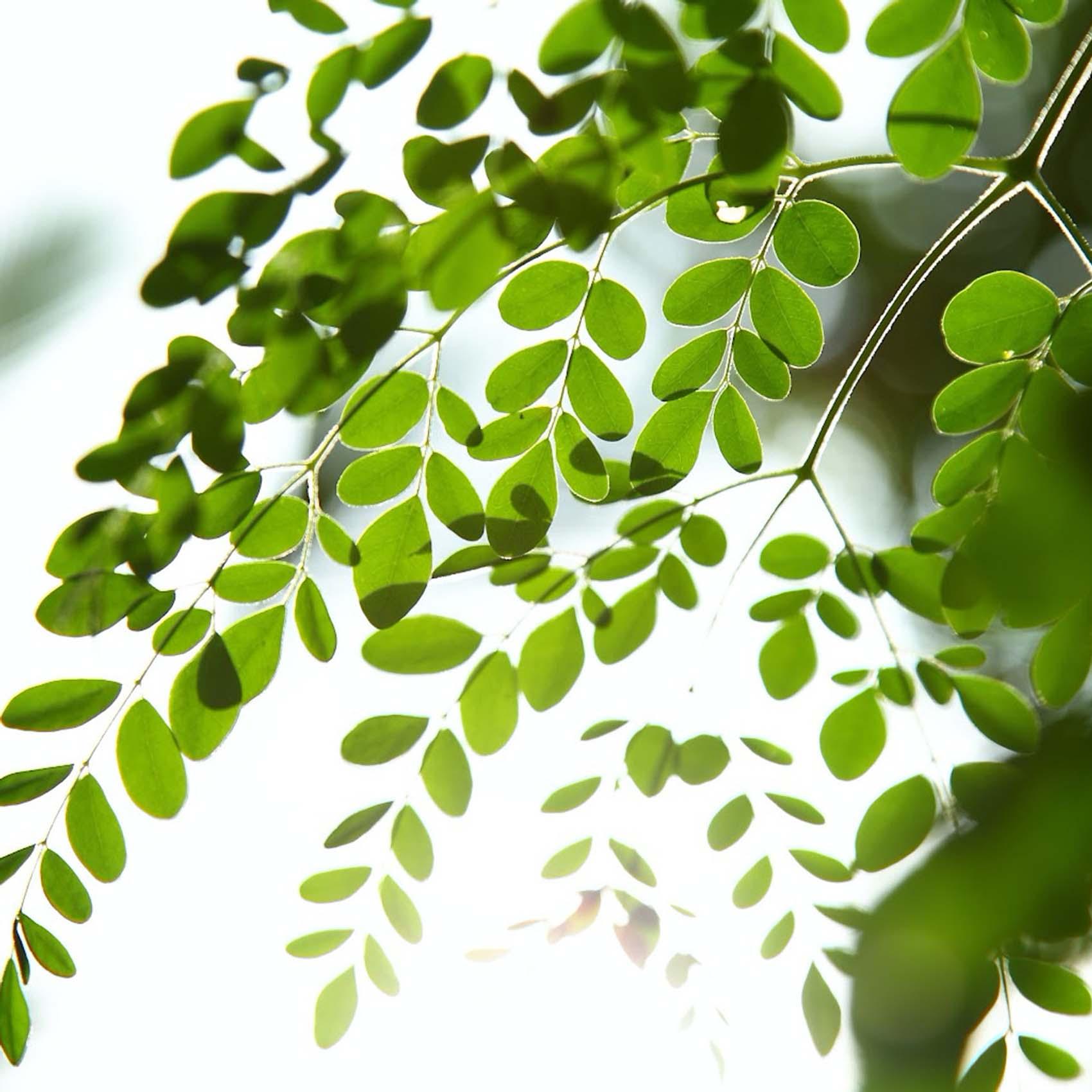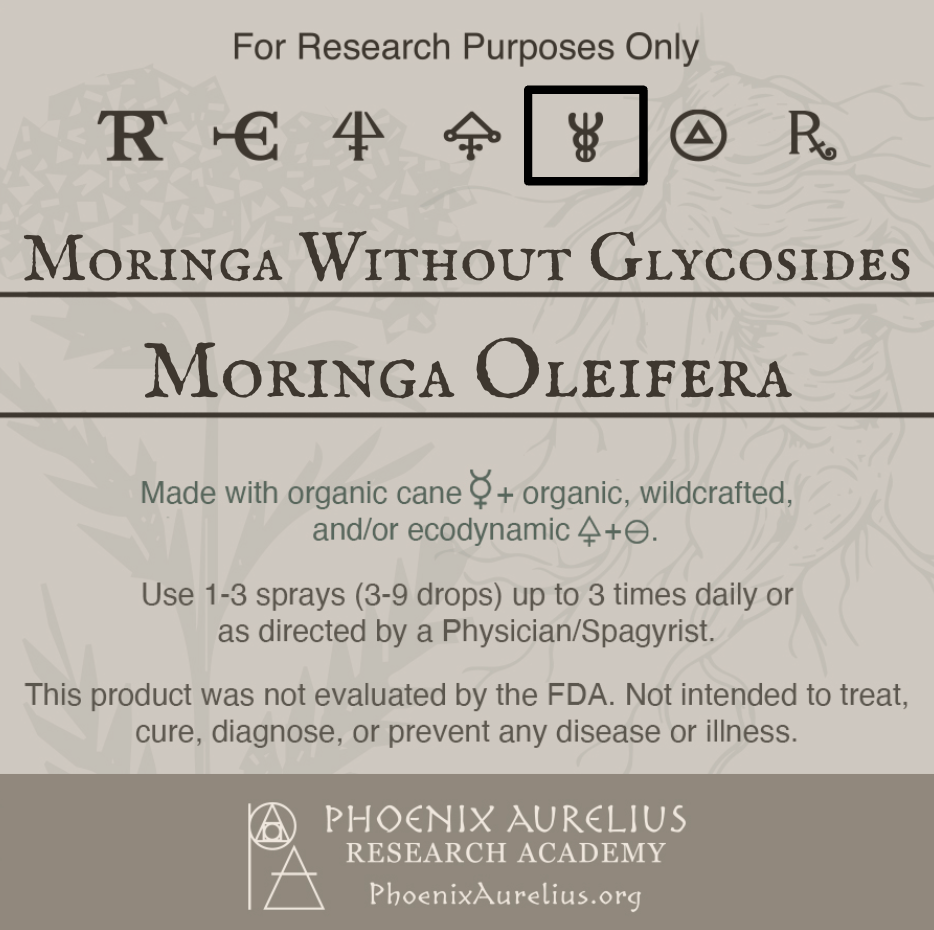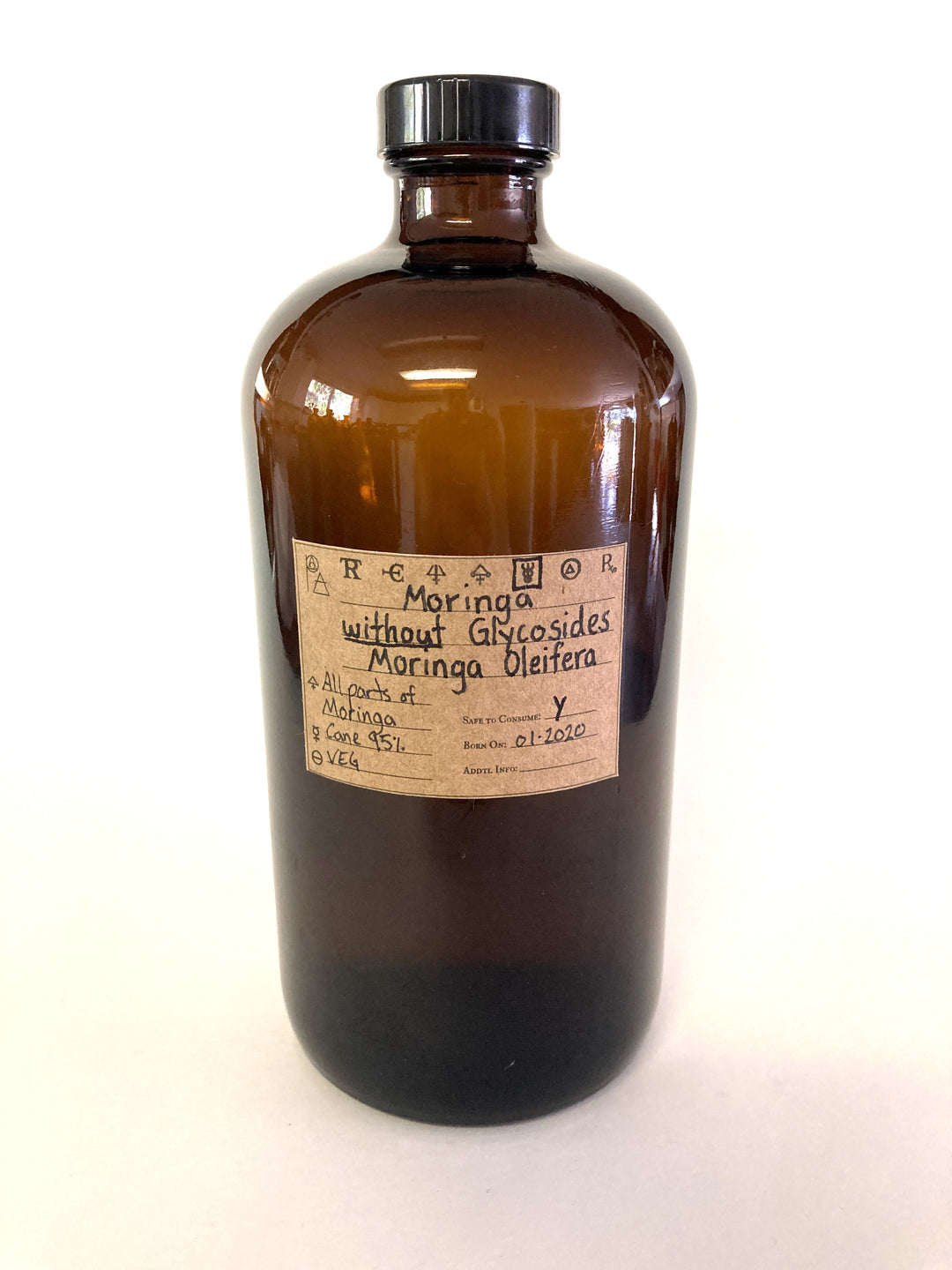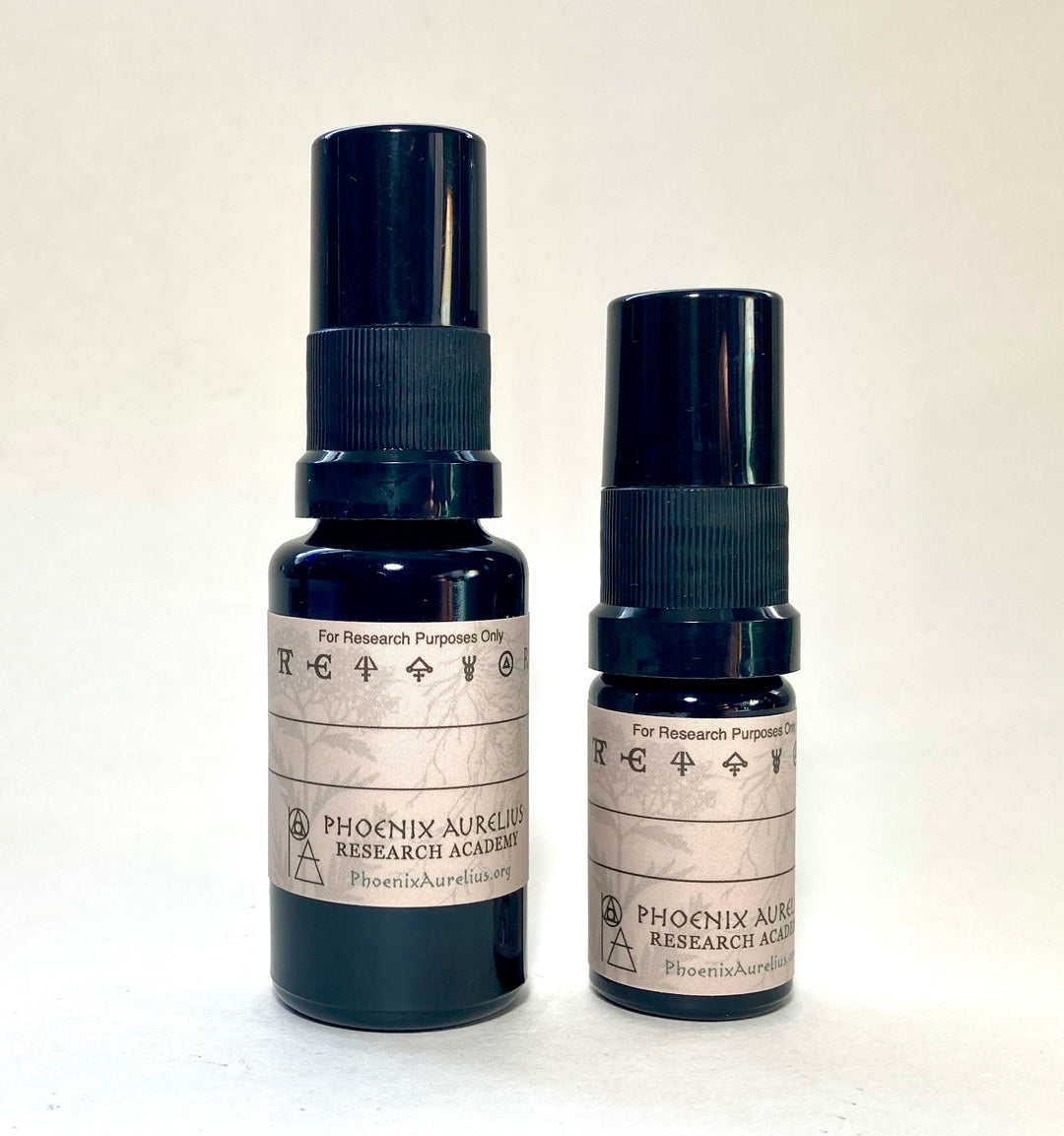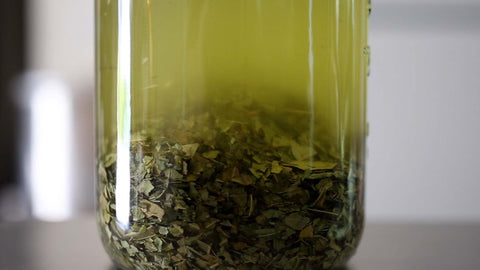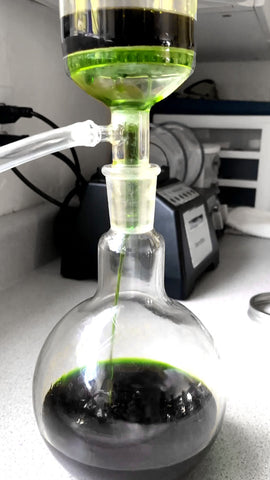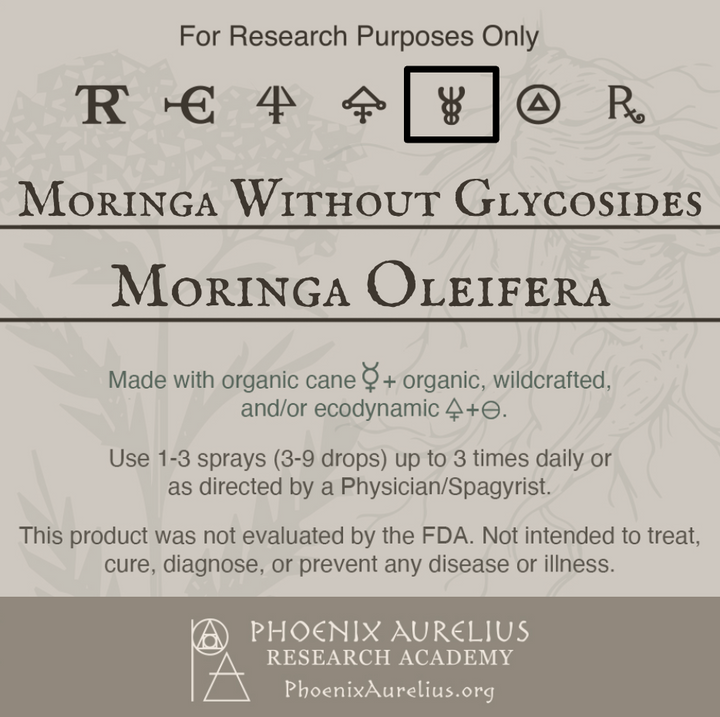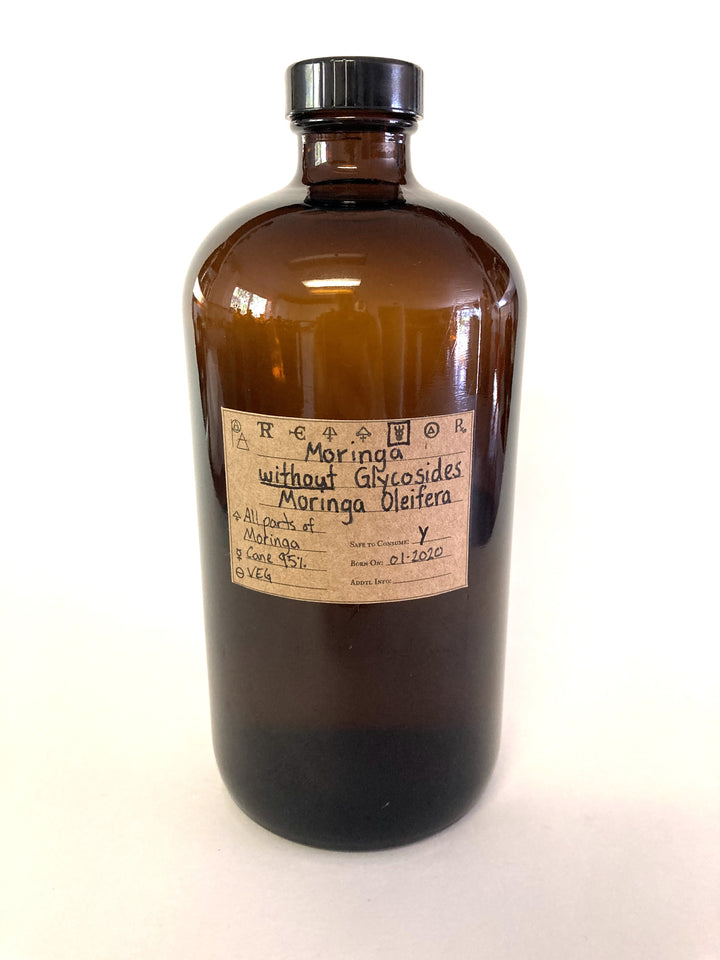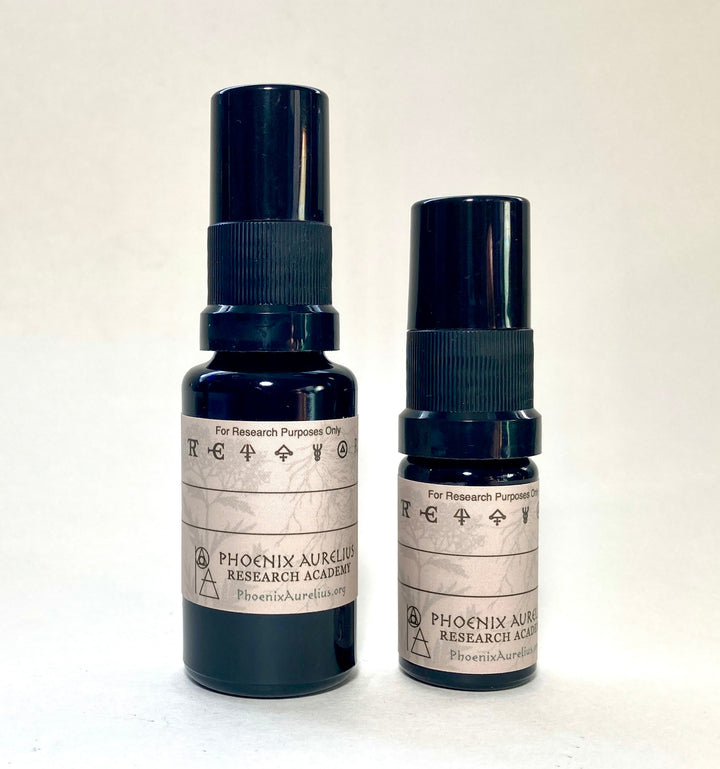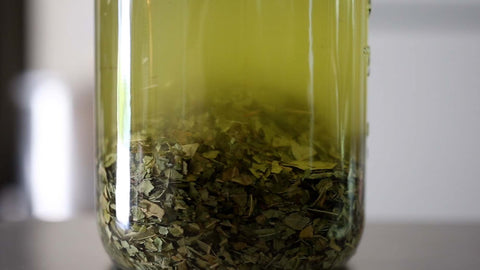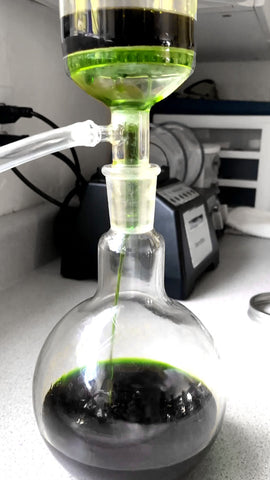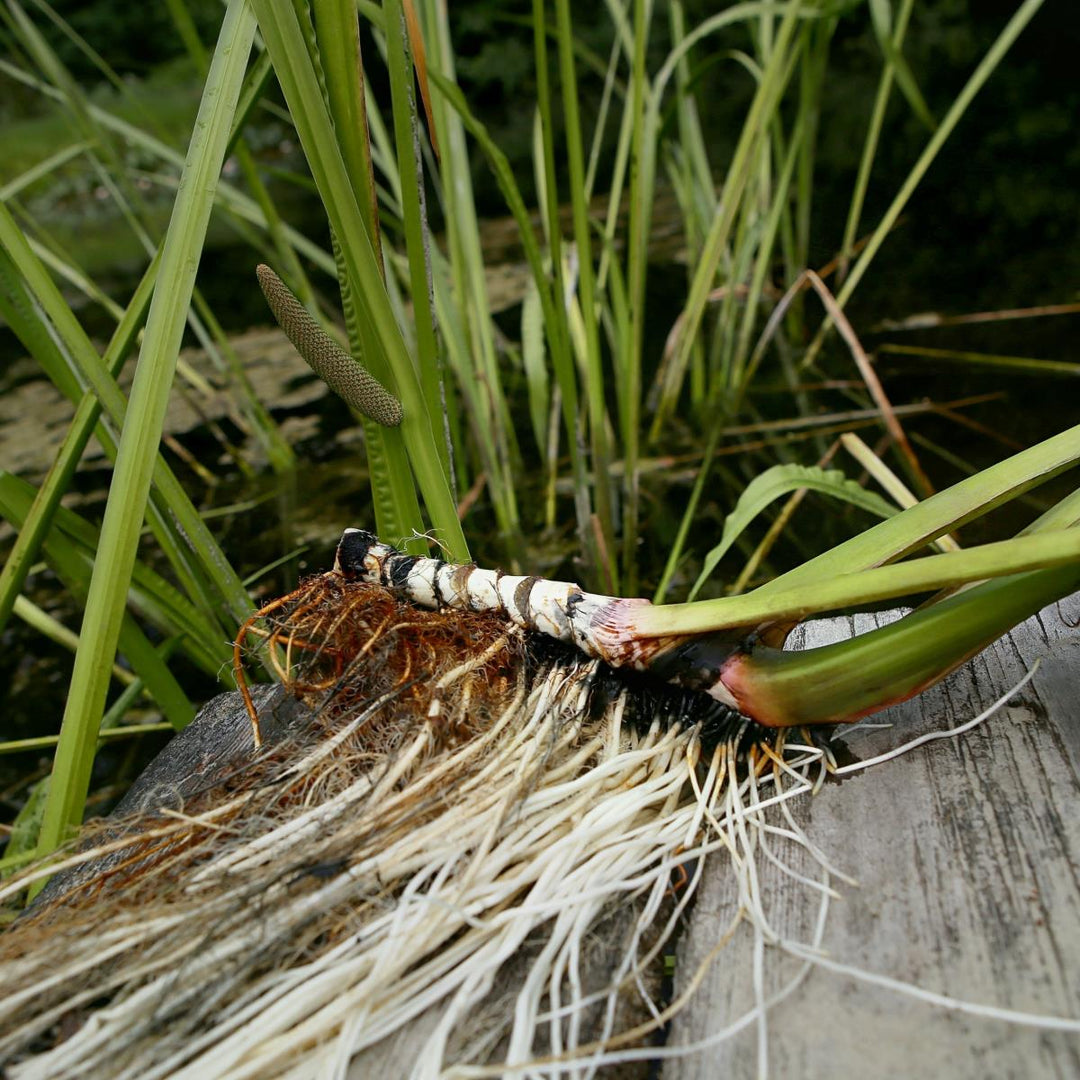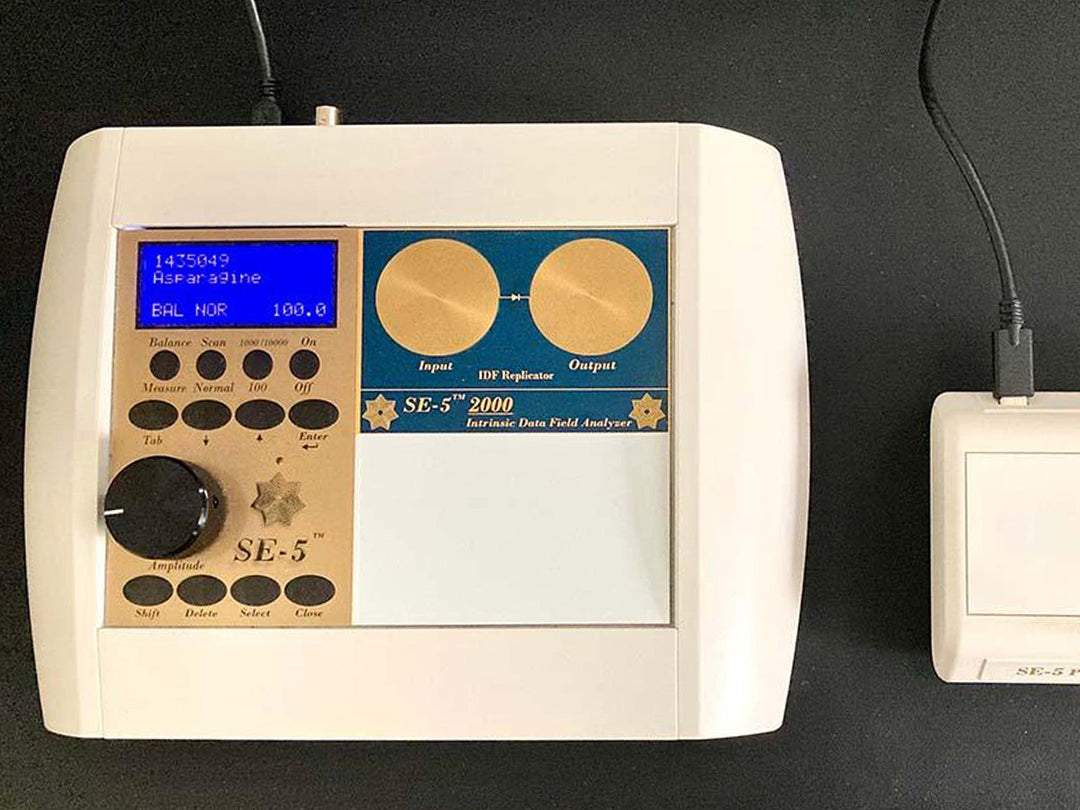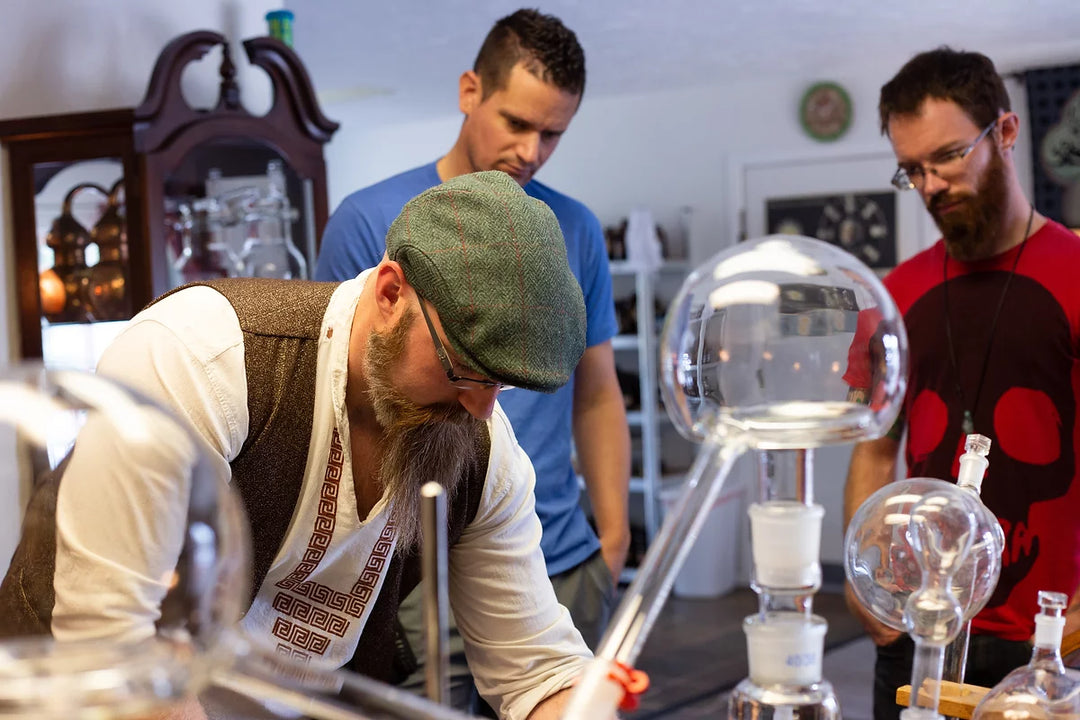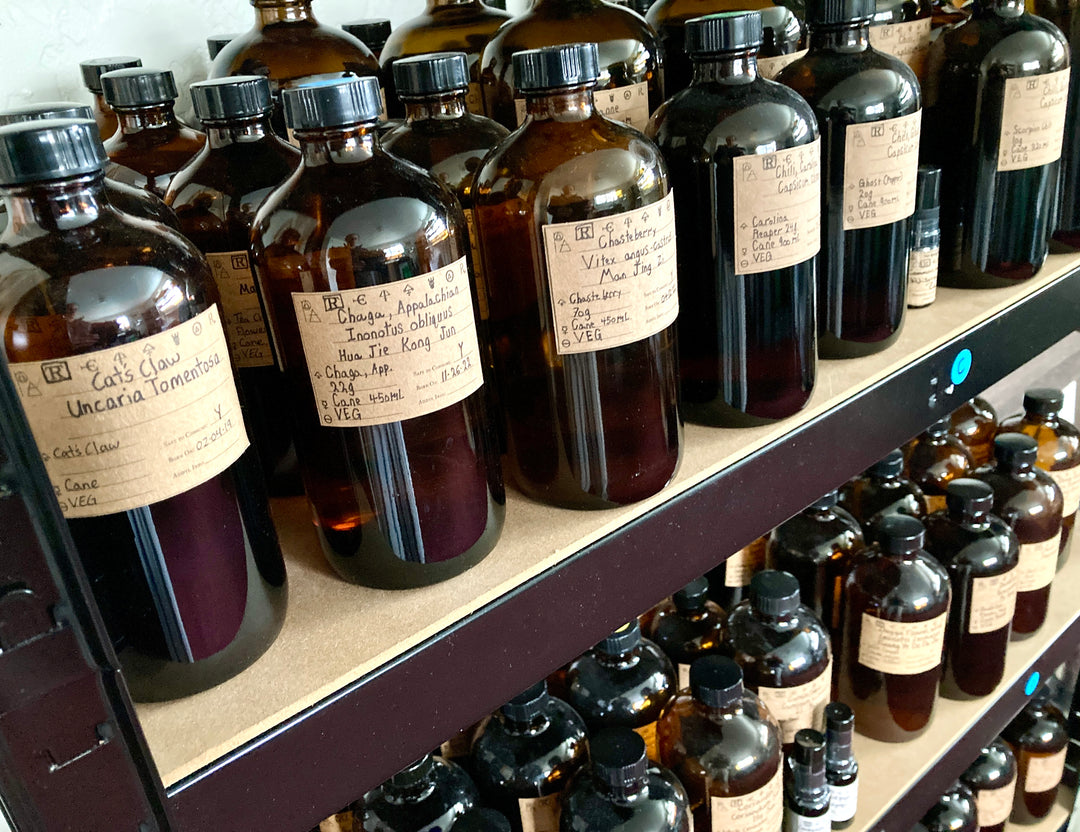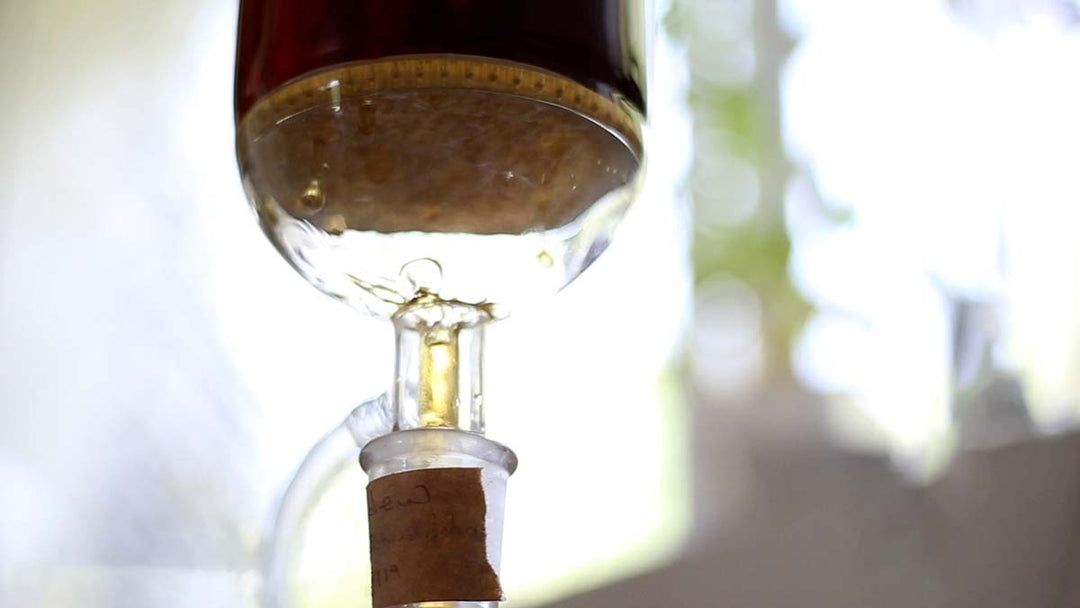Written by Phoenix Aurelius

Introduction:
Moringa oleifera is one of the most widely hailed medicinal trees in Southeast Asia, particularly in India and Indonesia where it is native and has been used for centuries. According to the USDA database, there are 118 known medicinal uses for the plant that span nearly every use imaginable for human wellness. Literally every single part of the tree at every phase is able to be used medicinally. This makes it a prime candidate for being turned into a Spagyric Clyssus.
Though the leaf is the most common part of the plant used in most nutritional and medicinal applications in today’s supplement industry, to simply prepare a Spagyric Tincture of the Leaf is to ignore the multitudinous other benefits that the tree offers. As a result, the Phoenix Aurelius Research Academy has performed a tedious process of making a Spagyric Clyssus of as many parts of the Moringa Tree as we were able to get our hands on: Seed, Root, Bark, Leaf, Flower, and Fruit [Seed Pod].

What is a Spagyric Clyssus?
According to Paracelsus, who invented the Spagyric Clyssus and its methods of creation, a Clyssus is “the Power of a Plant which originally stems from one thing alone after the species has been separated into its different parts and finally recombined.” That said, it was Johannes Baptista Porta who put it very eloquently, “The Clyssus is the extraction of the subtlety of all parts of the plant, which flow together into a common being.” A Clyssus can appear as a powder, a liquid, an oil, or even a salt depending on the plant being worked on and the parts of that plant which are included. Making a Clyssus of Moringa oleifera was somewhat straightforward as far as making a Clyssus goes because I only had dried components to work with and none of them produce any significant quantity of Volatile Oils
Creating an Aqueous Extract and an Ethanolic Extract:
First, I started with a fermentation of the Leaf, Bark, and Roots to obtain some endogenous Mercury, and to see how much it could yield. The quantity of alcohol it produced was around 3%, so I wasn’t able to exclusively use endogenous Spirit for this project, but I distilled and rectified this ferment to get a bit of the endogenous spirit to use at the very end of the process. Then, to obtain the Sulfur, each individual part of the plant underwent two separate extractions - an ethanol extraction [with Organic 95% Cane ETOH], and an aqueous extraction [with distilled water]. As I mentioned already, there aren’t any significant essential oils or volatile aromatic compounds in the dried Moringa components, so the Sulfur of this Clyssus primarily comes from the Fixed Sulfur in two grades - Ethanol-Soluble Fixed Sulfur and Water-Soluble Fixed Sulfur. According to the USDA database, these extractable components contain the vast majority of the active constituents. Once I had both an aqueous extract and an ethanolic extract of each of the 6 plant parts, the separatory work began.
I took all the ethanol extracts, combined them together, and cohobated each of them twice, and on the third distillation, I kept the Mercury and the Fixed Sulfurs separate. I then took the Water-Soluble Extracts, combined them together, and then separated the Phlegm from the Water-Soluble Fixed Sulfur through a single distillation. This gave me an Infused Exogenous Mercury of Moringa, Phlegm of Moringa, Water-Soluble Fixed Sulfur of Moringa, and Ethanol-Soluble Fixed Sulfur.

Calcination:
I then took the entirety of the Biomass and ½ of the Water-Soluble Fixed Sulfur and incinerated it first, allowing it to smolder down, ground it finely, and then calcined it to an ash over hardwood coals at approximately 600-700*C for several hours until it wouldn’t get any lighter. The Salts were leached from the ash by boiling in distilled water, cooling and filtering. The ash was then calcined again, leached again, filtered again, etc, until no further salts were leached. Once I had all the leachings from the ash, I boiled all the leachings down, leaving only crude Salt of Salt in the evaporation dish. This was ground finely, calcined thoroughly, and then itself dissolved in distilled water, filtered, and evaporated again until the salts came out snowy white. At this point, the Salts were then crystallized, then dried out and ground finely to achieve a very pure, feathery anhydrous 99.99% Potassium Carbonate. These finished Salts contain both the Salt of Salt and Salt of Sulfur of the plant, meaning that they are considered to be Crystallized Philosophic Salts.

Volatilizing the Philosophic Salt:
I then had to volatilize this Philosophic Salt, so I took a small quantity of the Distilled Phlegm from earlier and performed a circulatory distillation of the Salts with it for a prolonged period of time in a Pelican apparatus. Since the product did not yield any essential oils, the Distilled Phlegm contained any volatile aromatic compounds that I could extract from the dried biomass. After a couple weeks, a good portion of the salts began to volatilize, indicating that there were enough Volatile Aromatic Compounds in the distilled phlegm to change their chemical structure. I removed these volatilized salts from the Pelican using silicone tools and set them aside. I distilled the remaining solution to reclaim the salts that didn’t volatilize.
At this point, I had a Mercury, a Phlegm, some Water-Soluble Fixed Sulfur, all of the Ethanol Soluble Fixed Sulfur, Some Philosophic Salts, and some Volatilized Salts.

Distilling the Mercury, Volatilized Salts, and Phlegm:
The Mercury was placed in one flask, the Volatilized Salts in a second flask, and the Phlegm placed in a third flask - I built a custom piece of labware using a bunch of adapters so that each flask distilled into a single 6 Liter Alembic Head where all the vapors could condense together. Once the system was set up, each flask was then heated to distill its contents - the volatilized salt was a pyrolytic distillation, and its vapors met up and combined with the vapors of the Phlegm and the Mercury, all of which condensed together. I then took this solvent and circulated it in a Pelican with the Philosophic Salts for a week. I then distilled the solvent out again leaving me with Philosophic Salts that were calcined again. At length, I used this distilled solvent to dissolve the Ethanol-Soluble Fixed Sulfur and the rest of the Water-Soluble Fixed Sulfur from earlier in the process. This caused some precipitation of Glycosides to occur, which were filtered out and set aside. I then added the Philosophic Salts to the filtrate and allowed this to digest for a fortnight.

The Finished Product:
This product was filtered to 2 microns to remove all unreacted salts and its pH value was tested. It was roughly 7.3, which indicates it is definitely balanced enough for supplementation. I bottled up the majority of this product as is, but to one of the bottles, I added the precipitated glycosides so I would have some with glycosides and some without glycosides.
This tinctured Clyssus of Moringa is a very full-spectrum Spagyric Product that combines all the medicinal properties of all parts of the Moringa Bush. According to IDF Analysis, there are roughly 79 of the 87 possible active constituents from Moringa found in this product, including all water + ethanol soluble amino acids, vitamins, and minerals along with alkaloids and glycosides.
Ingredients: Organic Cane Spirit, Organic Indigenous Moringa Spirit, Distilled Water, Moringa oleifera Seed, Root, Bark, Leaf, Flower, Pod, Philosophic Salts of Moringa oleifera [99.99% Potassium Carbonate].

Additional Notes:
~Standard dosage is not to exceed 10 drops one time daily unless otherwise detected by IDF Analysis or prescribed by a Medical Professional. At this time, prolonged usage is not recommended. Its flavors are Sweet, Astringent [Sour], Bitter, and Salty. It lacks any significant Pungent flavor. Based on its flavor profile, it may work well for nourishing tissues, expelling wind, and clearing up excess fluids and eliminating excess mucous. In Paracelsian Spagyria, this would be considered a potent Arcanum and would not be taken in more than 3 drops daily for more than a week at a time, and even at that, it would be taken cautiously and immediately discontinued if any side-effects were noticed. As always, I suggest starting with a small dosage and allowing the energetics of the plant to be worked with and integrated before taking any more.
~The Tinctured Moringa Clyssus without Glycosides can be used like a tonic in the quantity of 3-5 drops [or 1 spray] for 7 days at a time, followed by a break of three days thereafter.
~The Tinctured Moringa Clyssus with Glycosides has more medicinal actions and is more cleansing. Dosage for this is the same, though only taken for 5 days at a time with a break of 3 days thereafter. IT IS NOT SAFE for Pregnant Mothers because of the miscellaneous precipitated glycosides and the naturally-occuring 4-ALPHA L-RHAMNOSYLOXYBENZYL- GLUCOCYANATE content from the Flower, Bark, and Root which can make the Uterus contract and can therefore cause miscarriage or abortion. Because the glycosides were separated out, the Moringa Clyssus without Glycosides is most likely safe to be used during pregnancy, but you should consult with a physician before use - if it were me, I would just totally avoid it.
~It is important to mention that Moringa Leaf does not contain these constituents and a Spagyric Tincture of the Leaf alone is safe to administer during pregnancy and breastfeeding in moderation. Additional studies have shown that Moringa oleifera leaf is quite beneficial in enhancing female fertility. It has also been used to assist a healthy pregnancy, and also increases breastmilk production significantly both in Human and Bovine specimens. So if you’re pregnant or breastfeeding, consider just using the Spagyric tincture of Moringa Leaf.
~When it comes to a Clyssus, there are multitudinous pathways that can be employed and lots of ways a Clyssus can be made, so this product is not the only way that a Moringa Clyssus can be made, nor should it be seen as a ‘definite’ standard. To the best of my knowledge, I am the first person to have ever made a Moringa Clyssus with all 6 of the medicinal plant parts of the Moringa bush [Seed, Root, Bark, Leaf, Flower, and Fruit]. The way I chose to go about this work was just one way that I could have gone about doing it. I did it like this because I was working with over 5 gallons of product in total and I didn’t really want to undertake a Pyrolytic distillation working with these quantities. It is for this reason that we have called the product a ‘Tinctured Clyssus,’ and it contains all the benefits of both aqueous and alcohol soluble constituency of the parts of the herb used.
